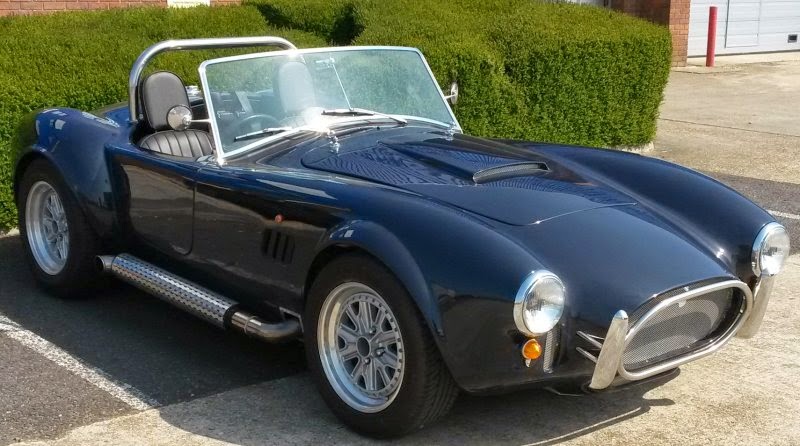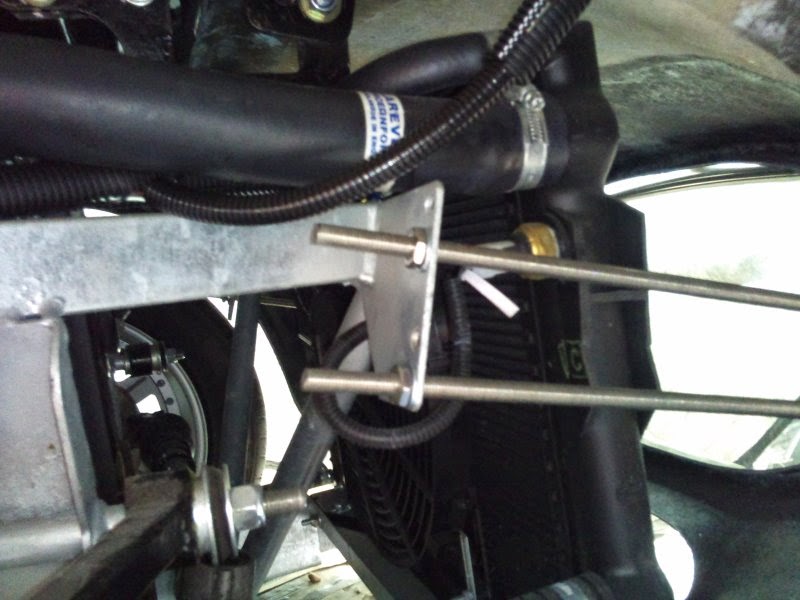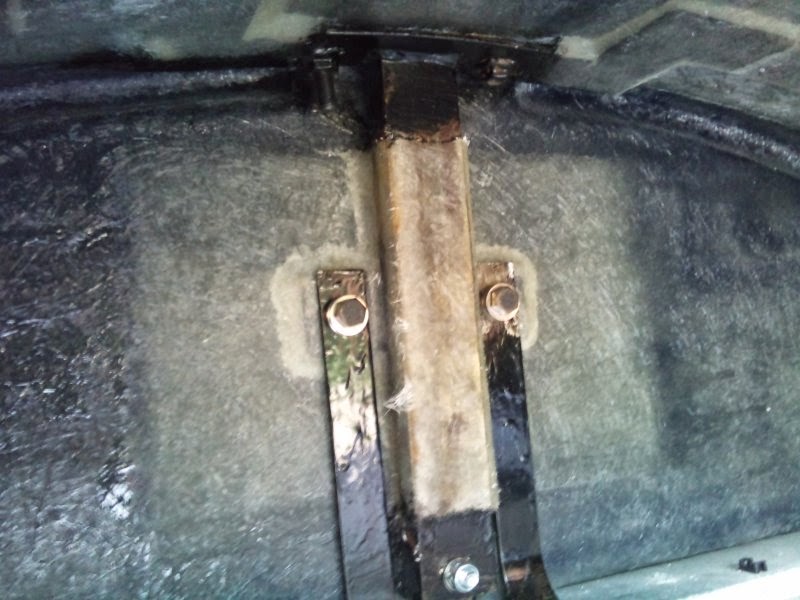Fixed Once...
The first time the clutch broke I discovered that the push rod which connects the slave cylinder to the clutch arm had fallen off. I can only assume that it wasn't properly connected. I reattached it and couldn't get the clutch to disengage. I bled the clutch and still couldn't get it to disenage. This was starting to get annoying as I knew it worked before. After a 2nd bleed of the clutch including purging the slave cylinder, I tried a slightly longer push rod (well, a piece of m8 studding ;-) It still didn't work. To test it I had my son in the car pressing the pedal to the floor with the rear wheel jacked up. The wheel should have turned while in gear if the clutch was disengaging. I gave it one last try and pushed the wheel round hard and it suddenly moved. The clutch plate must have been stuck to the flywheel. Hooray, it was fixed. I should have heard the alarm bells at this point, if it was starting to sieze with the damp weather we were having it wasn't going to "go away". I simply patted myself on the back, ticked off the "get clutch working" job and moved onto fitting the doors.
It gets worse!
I needed to move the car out of the car port to fit the other door (car port isn't wide enough for both doors to be open). So, I fired up the beast and tried to engage reverse. Why wasn't it going into reverse? Oh No!!! The clutch had broken again. But, but, but, nothing had changed. It was working, how could it have stopped working. I checked the push rod, I bled the clutch (3 times!!), I jacked it up and could see the push rod moving the release arm. The stupid clutch plate was seized again.
The forum advice to free a seized plate was to get the engine to running temperature and blip the throttle. Made some good noise, but no joy. Failing that start it in gear and apply the brake. The car shot backwards out of the car port and applying the brakes just stalled the engine. Other advice included driving in gear and accelerating hard - not possible with a 1/2 finished non-road legal car. So it meant taking the gearbox out. No........!!!!!
After many weeks of pondering and looking at the problem of how to remove the gearbox while the engine is in the car and doing it all on my back I kept finding other simpler job to do. It was starting to frustrate me and I was spending every waking minute worrying about how it could be done. I finally got down to the business of removing the gearbox to get to the clutch.
First I jacked up the car as high as I could to give me lots of room underneath. I then made a simple little trolley to sit under the gearbox and allow me to slide it backwards away from the engine. Getting the gearbox and engine apart was no problem. I removed the clutch cover and found the clutch plate was nicely stuck to the cover. I had to use a mallet to get it off. I didn't mess around cleaning it, I just bought a new one. Not cheap, but worth it!!
The the fun and games started.
After aligning the clutch plate and attaching to the flywheel my back and forearms were starting to ache. I tried and tried, but I couldn't get the bell-housing to re-mate with the engine - wiggling, pulling, lifting, pushing and swearing had no effect. I even strained a muscle in my chest doing it. The clutch plate was obviously not aligned enough to allow the gearbox to connect. I bought a better clutch aligning tool that aligns the plate to the flywheel rather than the crappy plastic one that aligns plate to cover. And hey presto, with some wiggling and pushing I managed to get the bell-housing close enough to fit the bolts.
With it all bolted up I cheered loudly when the clutch disengaged!!
Made my day!!






























